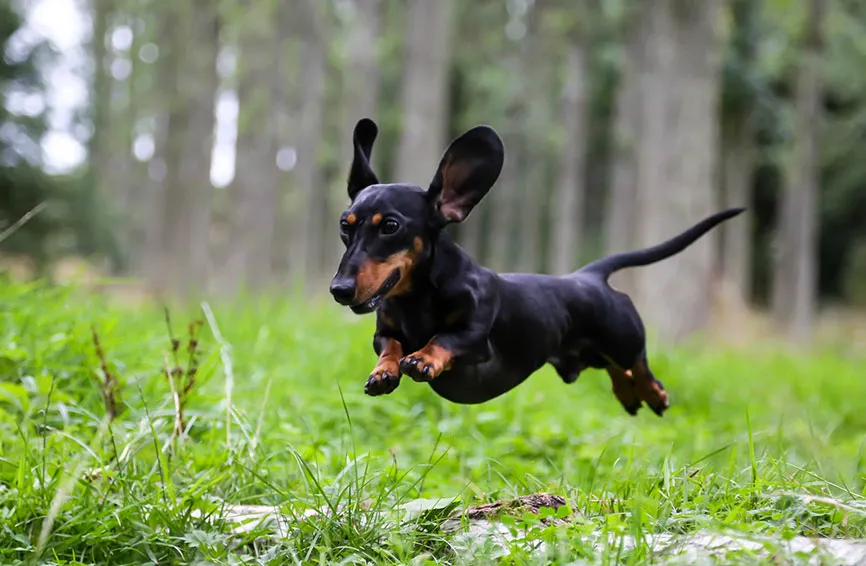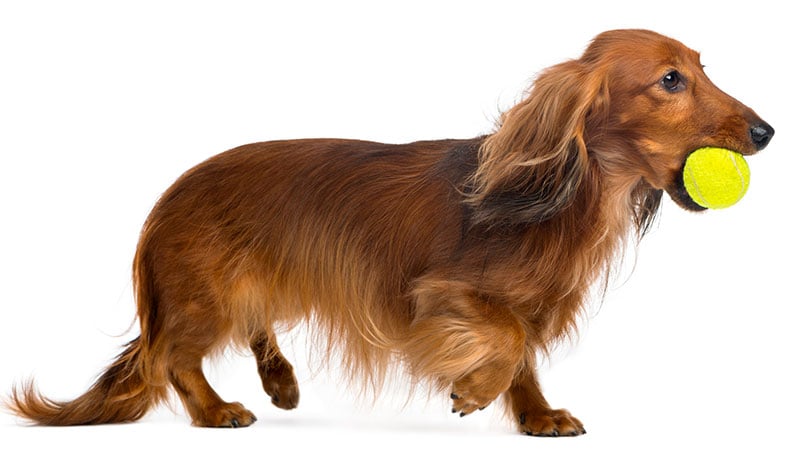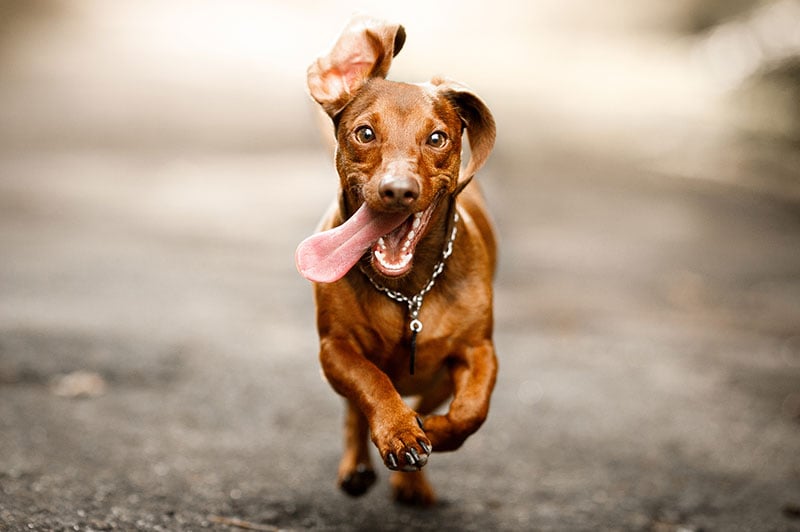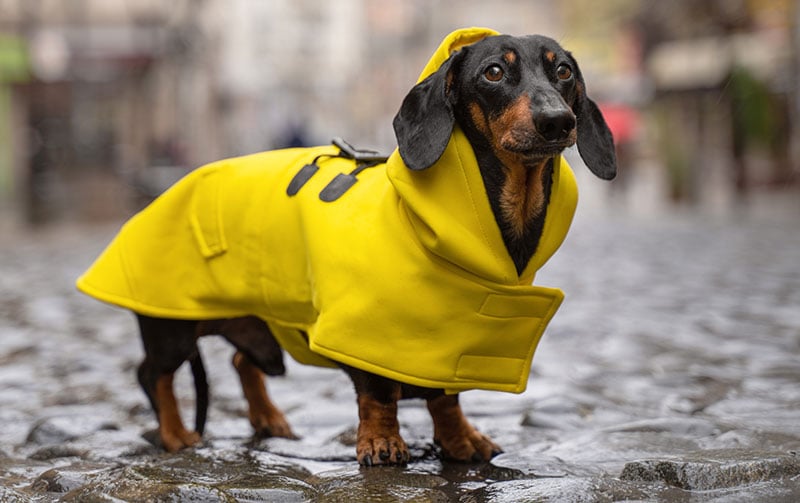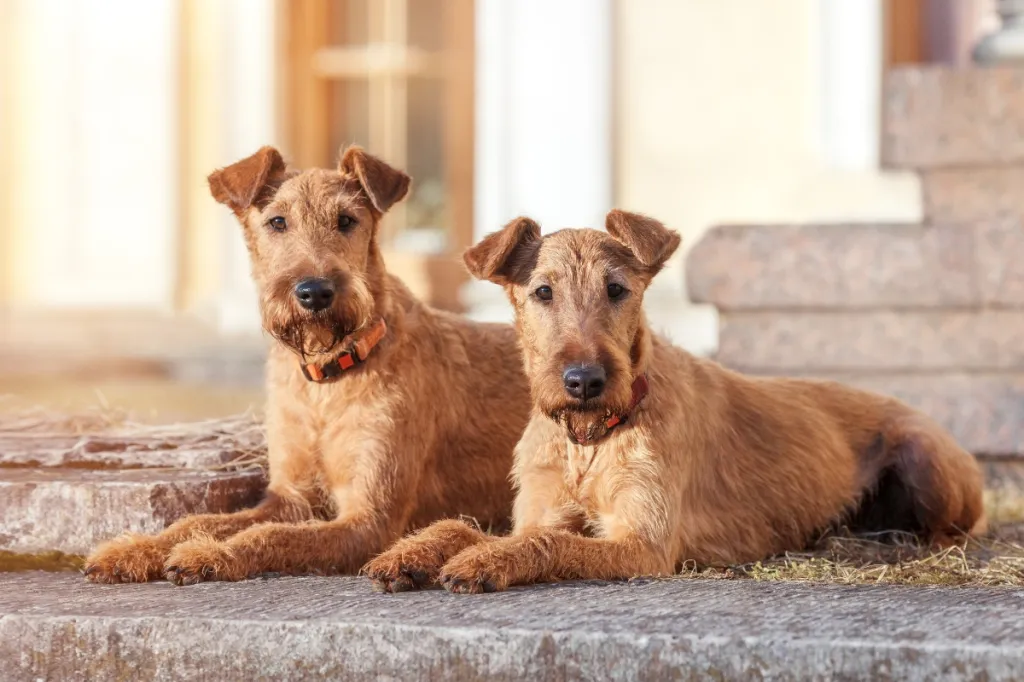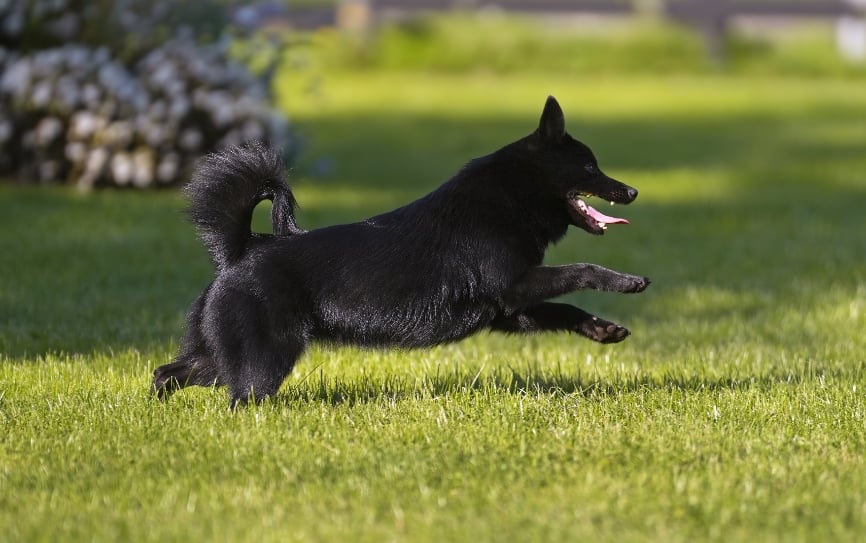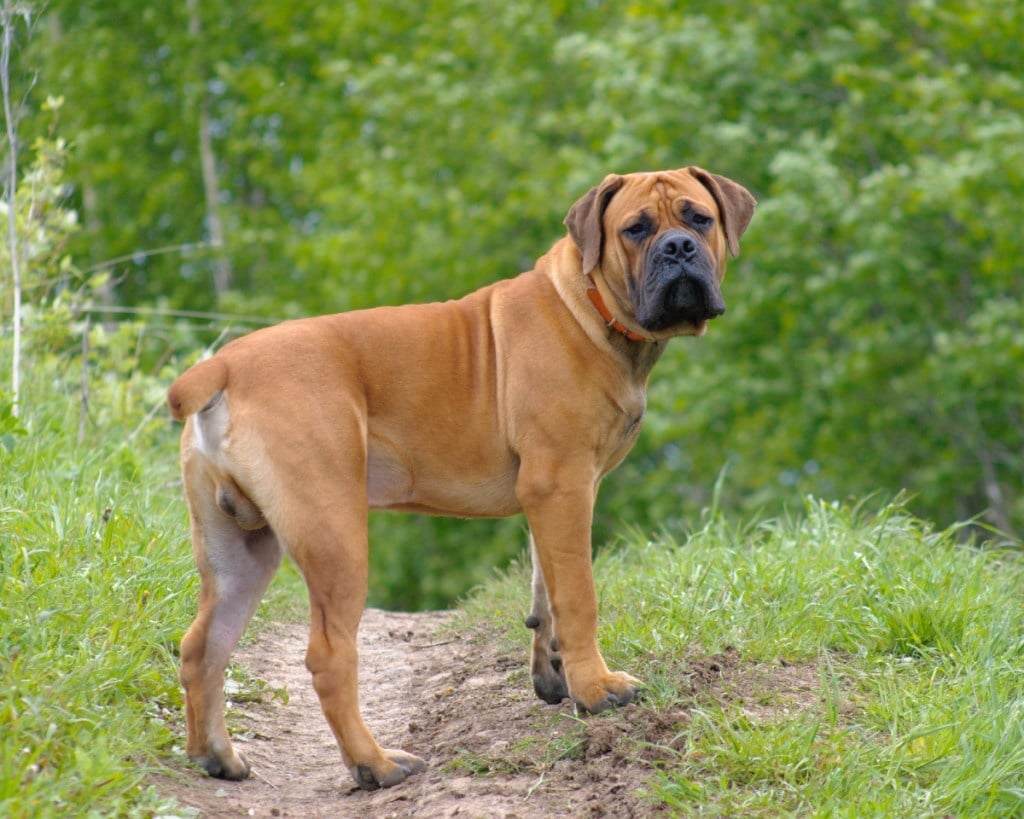Introduction to Dachshunds
Dachshunds, also known as wiener dogs, are friendly and curious hounds that make excellent companions and good watchdogs. They are known for being spunky, alert, and bold. Originally bred to be hunters, they tend to have brave, determined personalities and a high prey drive. Read on to learn whether this breed is right for you and your home.
Size of Dachshunds
When fully grown, a standard dachshund will be about 16 to 32 pounds and stand eight to nine inches tall. However, there are also miniature dachshunds that weigh 11 pounds or less and stand five to six inches tall.
Dachshunds typically reach their final size by one year of age.
Characteristics of Dachshunds
Dachshunds are moderately adaptable dogs that do well in a variety of environments, including in apartments or with first-time pet parents. It doesn’t take much time or effort to keep a dachshund groomed, but these dogs can be prone to obesity and weight gain if their diet is not ideal. Since they are hounds, dachshunds are known for being very vocal, chasing prey, and potentially wandering off from their homes if not properly secured.
Here’s what you can expect based on a dachshund’s breed characteristics.
| Breed Characteristic | Level (High, Medium, Low) |
| Affectionate with People | High |
| Good with Kids | Medium |
| Good with Pets | Medium |
| Need for Exercise | Medium |
| Energy Level | Medium |
| Intelligence Level | Medium |
| Able to Be Trained | High |
| Amount of Barking | High |
| Amount of Shedding | Low |
History of Dachshunds
Dachshunds are a well-established dog breed that has been recognized by the American Kennel Club since 1885. The word “dachshund” means “badger dog” in German. It was given this name because Germans developed the breed to dig through badger dens and have bodies low enough to the ground to fit through these spaces. Badgers tend to be between 25 and 40 pounds and have sharp claws and teeth. Therefore, dachshunds needed to be tough dogs and serve as good hunting partners in underground locations.
Also, dachshunds were bred to have coats that could withstand cold temperatures and thorny brush. They are a national symbol in Germany but have been popular in the United States too since the 1800s. The popularity of this breed declined in America during the World Wars because of their association with Germany. But they have become popular once again as pets in the U.S. and are occasionally even used for hunting still today.
Dachshund Standard Information
The breed standard is an ideal description by which dachshunds are judged at shows and competitions. In general, these dogs are positioned low to the ground with long bodies and short legs. They are muscular, have a hunting spirit, and have a confident and alert expression that makes them distinctive.
Here is an overview of the breed standard information for dachshunds.
Head:
- Medium-size eyes, almond-shaped and dark-rimmed
- Ears set near top of head
- Skull slightly arched
- Slightly arched muzzle
- Powerful canine teeth in scissors bite
Neck, Topline, Body:
- Long and muscular neck
- Flows gracefully into shoulders
Forequarters:
- Breast bone strongly prominent in front
- Long and broad shoulder blades
- Upper arm same length as shoulder blade
- Front paws full, tight, and compact
Hindquarters:
- Strong and cleanly muscled hindquarters
- Legs neither turn in nor out
- Hind paws smaller than front paws
- Rear dewclaws removed
Coat:
- Three varieties are permissible: smooth, wirehaired, and longhaired
- Smooth coat variety should be neither too long nor thick
- Wirehaired variety must have an undercoat
- Longhaired variety features slightly wavy hair that is longer under neck and forechest
Color:
- Various colors are permissible
- Red and cream, black, chocolate, wild boar, gray (blue), and fawn (Isabella)
- Brindle, dapple, piebald, and sable patterns
Gait:
- Fluid and smooth gait
- Legs incline slightly, not in exact parallels
Caring for Dachshunds
Taking care of a dachshund requires hard work but can be a lot of fun. These dogs are comfortable in nearly any type of home, just as long as there aren’t too many stairs to climb. These dogs have a moderate amount of energy and enjoy spending time outdoors getting their exercise. If you leave a dachshund alone for long periods of time, he or she may bark, which is something to be aware of if you have close neighbors.
Here are some general tips for taking the best care of a dachshund.
Best Living Environments:
- Apartments or houses are both fine.
- Homes with families and other pets are a good fit.
- A fully fenced yard is recommended.
Type of Exercise:
- Twice-daily walks to prevent weight gain.
- Games of fetch in a fenced yard are enjoyable.
Mental Enrichment:
- Allow play time with family.
- Give stimulating toys regularly.
- Try puzzle games for mealtime.
Training Strategies:
- Start training sessions early in life.
- Practice patience during training sessions.
Grooming Tips:
- Wipe the coat with a wet cloth between baths to remove dirt or debris.
- Brush the coat every couple of days.
- Good news -These dogs are fairly low maintenance with little shedding.
Common Health Problems of Dachshunds
Dachshunds typically have a life expectancy of about 12 to 16 years. They are predisposed to certain health conditions that are important to be aware of. The following list includes some of these.
- Back issues, including intervertebral disc disease
- Gastric bloat
- Ear infections
- Epilepsy, which is often a genetic issue
- Eye issues, including retinal atrophy, cataracts, and glaucoma
- Luxating patellas, a kneecap condition
- Deafness
- Dental disease
- Endocrine diseases, such as Cushing’s disease or hypothyroidism
- Congenital heart defects
Diet and Nutrition for Dachshunds
A dachshund’s diet is very important for overall health, and you might notice a dullness in the dog’s coat if the diet is not optimal. A high-quality small breed kibble is appropriate. These dogs have a habit of overeating, which can result in obesity and a wide range of medical conditions as the dog ages. To prevent unnecessary weight gain, avoid giving your dachshund table scraps and feed two distinct meals rather than letting your pup graze on food all day.
Where to Adopt or Purchase Dachshunds
The Dachshund Club of America was founded in 1895 and provides educational resources as well as a breeder directory for those looking for a dog.
In addition, there are state-based dachshund rescue groups all across the country. PetFinder and AdoptAPet are online resources for finding dachshunds in need of homes near you.
Related Breeds
If everything you’ve been reading here about dachshunds has you dreaming about bringing one of these dogs into your home, you might be interested to learn about related breeds as well before making a final decision. Here are some breeds that are related and similar to the dachshund to consider:
- Basset hound
- Drever
- Pembroke Welsh corgi
There are also various dachshund mixes that you might consider. These include the doxle (dachshund + beagle), dorgi (dachshund + corgi), dachshound (dachshund + basset hound), doxiepin (dachshund + miniature pinscher), and others.
Pet Insurance for Dachshunds
To help your dachshund live a full and happy life, consider signing your pup for pet insurance through Healthy Paws. We cover dachshunds of all sizes and ages so that they can get the veterinary care they need without causing you financial stress.
Pet insurance comes in handy with dachshunds when they jump off a high surface in your home and become injured, when they begin to age and show signs of kneecap issues, and when their eyesight begins to fail. Dachshunds also benefit from pet insurance when they unexpectedly develop cancer or when they eat a dropped piece of human food that is toxic to dogs.
To learn more about what pet insurance for your dachshund will cover and what it will cost you, request your online quote today, or give our pet-loving customer service team a call at 855-898-8991.
